Trees Birds Mammals Fish Amphibians Reptiles
Wild Algarve
Bookshop
Poronia punctata (L.) Fr. - Nail Fungus
Phylum: Ascomycota - Class: Sordariomycetes - Order: Xylariales - Family: Xylariaceae
Distribution - Taxonomic History - Etymology - Identification - Culinary Notes - Reference Sources
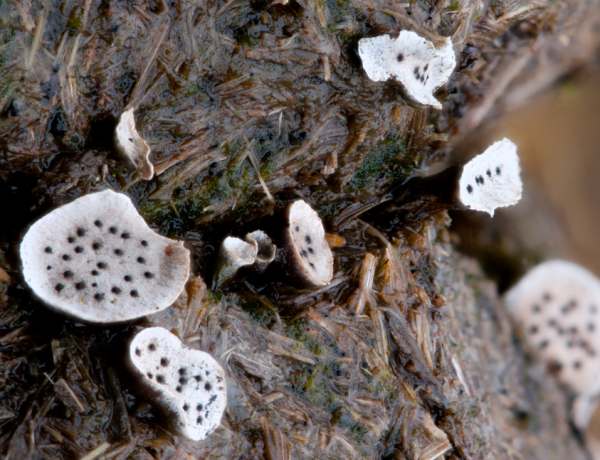
Type ‘nail fungus’ into Google and you soon become aware of the awful damage that dermatophytic micro fungi can inflict upon the toenails and fingernails of some unfortunate people. What you are less likely to learn about is an ascomycete fungus that masquerades as an agaric – at least in so far as it has a clearly defined cap and a stem. Nail Fungus grows on pony dung and looks like a broad-headed nail of the type used when securing bituminous felt to weatherproof the roof of a garden shed.
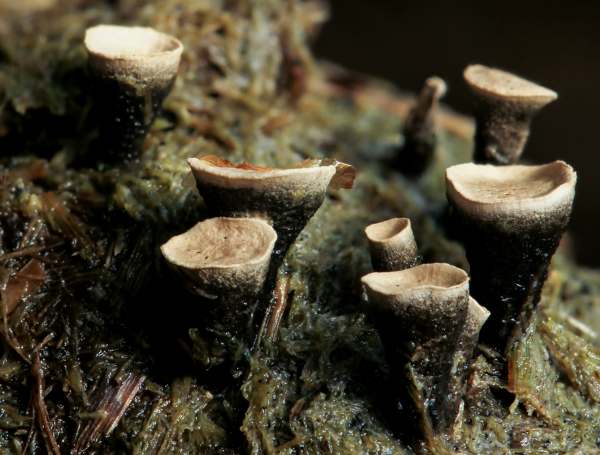
Distribution
Poronia punctata is now very rare in Britain and Ireland, but 100 years ago it was a much more common find. (Farming herbicides, plant pesticides and synthetic chemicals used in the 'worming' of horses have been blamed for the demise of Nail Fungus across much of Europe.)
This species was included as Endangered on the Red Data List prepared by Bruce Ing 1992; and as Near Threatened on Red Data List produced by Shelley Evans et al. in 2006. Poronia punctata is a UK Biodiversity Action Plan species.
Taxonomic history
Carl Linnaeus described this little ascomycete fungus as long ago as 1753, when he in effect established it basionym (subsequently sanctioned by Elias Magnus Fries) by calling it Peziza punctata.
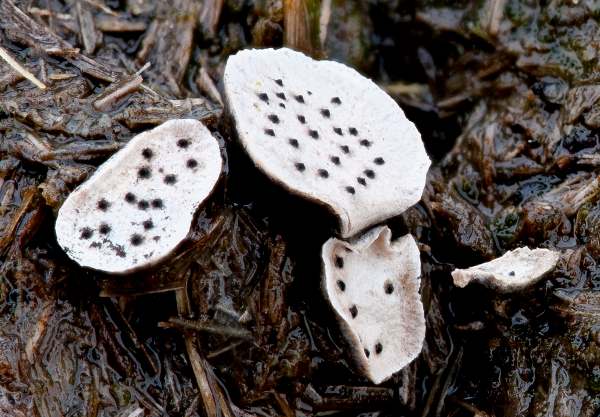
Almost a century later, in 1849, Fries transferred the Nail Fungus into its present genus, establishing its accepted scientific name as Poronia punctata. (There are lots of Peziza species in Britain and Ireland, but to date only two Poronia species are recorded - the other is the very rare Poronia erici, formally recorded only three times in Britain.)
Synonyms of Poronia punctata include Peziza punctata L., Sphaeria truncata Bolton, Sphaeria poronia (L.) Pers., and Hypoxylon punctatum (L.) Grev.
Etymology
Poronia, the genus name, may from the Latin noun porus and means with pores - a reference to the holes in the top of the cap as these fungi do not have bolete-like under surfaces. If you have more information on the origin of Poronia please let us know.
The specific epithet punctata is more straightforward; this also of Latin origin and means having fine spots, dots or puncture holes.
Identification Guide
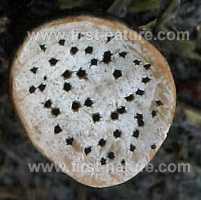 |
Description
The perithecia (ascomycetous fruitbody structures) are disc-like stroma, usually round or oval but sometimes lobed, 0.4 to 1.5cm across, occasionally developing a slightly raised margin at maturity. The disc is seated more or less centrally on a grey stem 0.5 to 1.5cm tall and 2 to 4mm in diameter. The fertile (upper) surface is white, becoming brownish particularly at the rim; matt; irregularly spotted with black pore openings via which spores are ejected. |
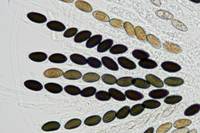 |
Asci
180 x 18µm; eight spores per ascus.
|
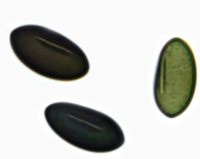 |
Spores
Ellipsoidal to bean-shaped, smooth, 18-26 x 7-12µm; hyaline; with usually a single guttule (oil-like drop visible inside the spore).
Spore print
Brownish black when fully mature
|
Odour/taste |
Not distinctive. |
Habitat & Ecological role |
On pony dung in unimproved grassland habitats. |
Season |
July to November in Britain and Ireland. |
Similar species |
Poronia erici Lohmeyer & Benkert is common in Australia but very rare in most of Europe. This species is very similar to Poronia punctata but its fruitbodies are smaller, have almost no stems, and their spores are larger than those of Poronia punctata. (Both of these Poronia species are rare finds, and surprisingly there are reports that in some European countries Poronia erici is rather more common than Poronia punctata.) |
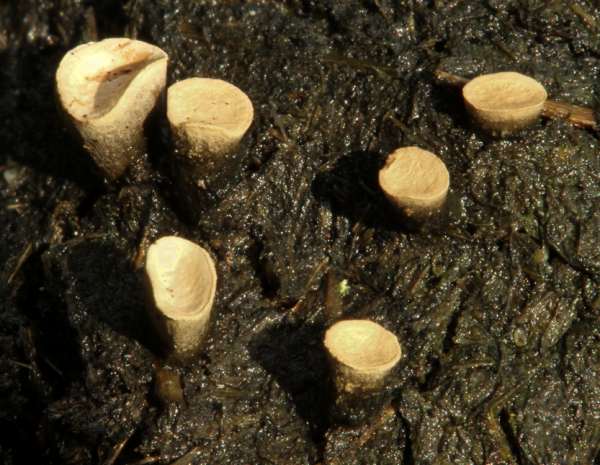
Culinary Notes
These tiny fungi are rare and so insubstantial as to be of no cullinary interest - and in any case they grow on dung, so who would even want to try eating them? Nail Fungus is generally regarded as being inedible.
Reference Sources
Fascinated by Fungi, 2nd Edition, Pat O'Reilly 2016, reprinted by Coch-y-bonddu Books in 2022.
Dennis, R.W.G. (1981). British Ascomycetes; Lubrecht & Cramer; ISBN: 3768205525.
BMS List of English Names for Fungi
Dictionary of the Fungi; Paul M. Kirk, Paul F. Cannon, David W. Minter and J. A. Stalpers; CABI, 2008
Taxonomic history and synonym information on these pages is drawn from many sources but in particular from the British Mycological Society's GB Checklist of Fungi.
Acknowledgements
This page includes pictures kindly contributed by David Kelly.
Top of page...
Fascinated by Fungi. Back by popular demand, Pat O'Reilly's best-selling 450-page hardback book is available now. The latest second edition was republished with a sparkling new cover design in September 2022 by Coch-y-Bonddu Books. Full details and copies are available from the publisher's online bookshop...